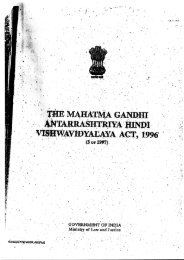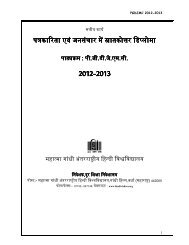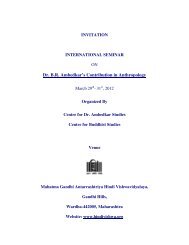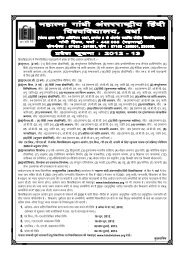Mamta Kalia
Mamta Kalia
Mamta Kalia
You also want an ePaper? Increase the reach of your titles
YUMPU automatically turns print PDFs into web optimized ePapers that Google loves.
the Majlis declared in March 1987 that<br />
“Our entertainers, male or female, did<br />
not enjoy the same esteem that they<br />
enjoy today from lay and religious<br />
people…this is a real revolution”, 14 he<br />
was perhaps referring to the slackening<br />
of the state’s stranglehold on cinema,<br />
even though censorship regulations had<br />
remained the same. He also went on<br />
record saying that “It is true that a<br />
film must have a message, but this does<br />
not mean that we must deny its<br />
entertaining aspects.” 15 Rafsanjani’s<br />
successor Khatami moved a step further<br />
by stating that “I believe that cinema<br />
is not the mosque…If we remove cinema<br />
from its natural place we will no longer<br />
have cinema.” 16<br />
This brings us to the last segment<br />
of our essay. Can the slower pace of<br />
editing, long shots, location shooting,<br />
non-continuity editing can be seen as<br />
a realist but at the same time nonmodernist<br />
strategy of figuration? The<br />
question assumes critical importance in<br />
the light of the new Iranian cinema’s<br />
attempt to relocate women to new sites<br />
within the diegesis. The widespread<br />
tendency in Iranian art films is to shoot<br />
mainly or exclusively in the exterior.<br />
Undeniably, limited budgets, small crews,<br />
outdoor locations and local characters<br />
add to the realism of the film. But there<br />
are also three other ways in which postrevolutionary<br />
Iranian cinema differs from<br />
other cinemas of realism – (1) The way<br />
the look is organized within the diegetic<br />
space (2) The near absence of close-<br />
134 :: April-June 2010<br />
up shots and (3) the limited use of the<br />
shot-reverse shot and the absence of<br />
the spectacle. Besides veiling also<br />
influences mis-en-scene and filming style.<br />
Objects and boundary marking features<br />
such as fences, walls and columns,<br />
constantly obstruct vision. Long tracking<br />
shots with these obstacles in the<br />
foreground highlight them as a visual<br />
barrier and as metaphors for modesty<br />
and veiling.<br />
The American feminist film theorist<br />
Mary Ann Doane has suggested that<br />
veiling generates a fetishist desire for<br />
the onscreen woman. She argues that<br />
a supplementary surface over the face<br />
“functions to hide an absence.” 17 But<br />
Islamic ideologues argued just the<br />
opposite. It came to be widely held that<br />
by veiling, female bodies became healed<br />
and emblematic of chastity. This is why<br />
the new Iranian cinema encouraged<br />
greater visibility of women provided they<br />
appeared veiled and purified on the<br />
screen. Actually, veiling can be a doubleedged<br />
sword. Naficy reminds us that:<br />
For every stratagem of veiling . . . there<br />
is one that violates it or plays with it, turning<br />
the veil not only into a powerful semiotic<br />
and political icon, but also into a dynamic<br />
instrument of power, sexuality and<br />
transgression. . . . Walls and veils may<br />
segregate people but . . . they tend to provoke<br />
curiosity and to offer visual pleasure by<br />
exhibitionism and voyeurism. . . . By playing<br />
with the veil, [women] create the necessary<br />
distance that promotes scopophilia<br />
(pleasurable looking). At the same time, these<br />
strategies turn them, as the subjects of<br />
scopophilia, into erotic objects, thus, ironically,

















